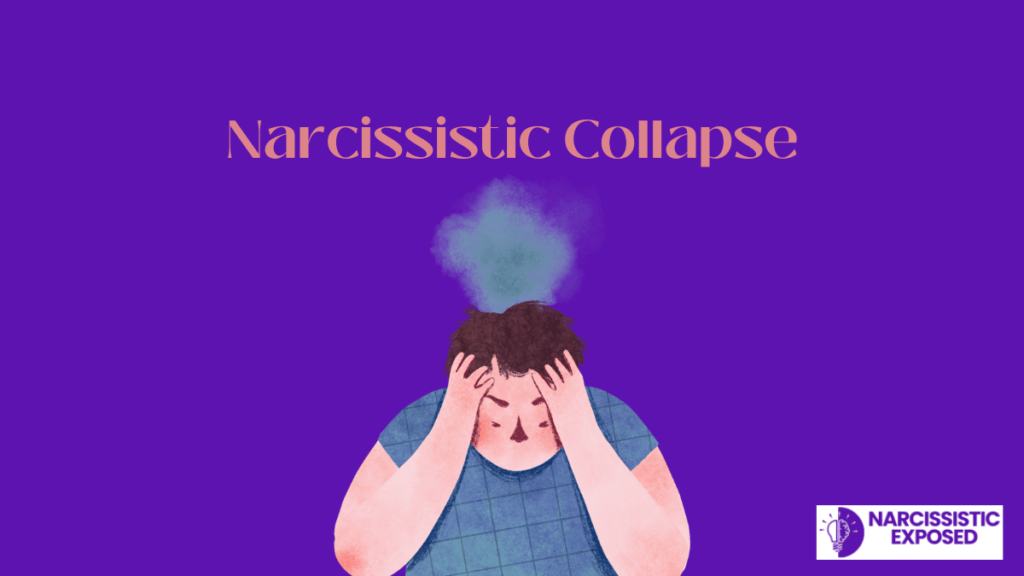
Narcissistic rage is a term that describes the intense anger, aggression, or passive-aggressiveness exhibited by individuals with narcissistic tendencies or Narcissistic Personality Disorder (NPD) when they encounter what they perceive as criticism or a slight to their ego. This article aims to unravel the intricacies of narcissistic rage, offering a comprehensive understanding of its manifestations, triggers, and impacts.
Table of contents
Understanding Narcissistic Rage
Grasping the concept of narcissistic rage is crucial for those affected by it, either directly or indirectly. It’s not just an outburst of anger; it’s a complex psychological response deeply rooted in the narcissist’s self-image and emotional regulation mechanisms. By exploring this phenomenon, we can gain insights into the behavior patterns of narcissists and develop strategies for effectively dealing with them, thereby reducing the potential harm to their relationships and well-being.
In the following sections, we will delve into the characteristics of narcissistic anger, what triggers it, how to manage it, and its lasting effects on interpersonal dynamics. This journey promises to provide valuable insights for individuals seeking to navigate the challenging waters of relationships with narcissistic individuals.
The Face of Narcissistic Rage
Describing the Appearance and Manifestations
Narcissistic rage can be both startling and perplexing to witnesses. Unlike typical anger, which is usually a response to a specific situation, narcissistic rage appears more intense, often disproportionate to the triggering event. It manifests in various ways, including verbal outbursts, aggressive behaviors, passive-aggressive actions, and even complete withdrawal or silent treatment. The rage is marked by a distinct intensity, driven by the narcissist’s wounded ego and deep-seated insecurity.
Comparison with Typical Anger
What sets narcissistic rage apart from ordinary anger is its origin and purpose. While normal anger usually arises from a sense of injustice or frustration, narcissistic rage is often rooted in threats to the narcissist’s self-esteem or self-worth. It’s not just about expressing displeasure but about regaining power and control. The rage is less about the specific issue at hand and more about the narcissist’s perception of being undermined or belittled.
This section aims to paint a clear picture of narcissistic rage, highlighting its unique characteristics and how it differs from common expressions of anger. Understanding these distinctions is crucial in identifying and appropriately responding to such episodes.
What Incites Narcissistic Rage
Identifying Common Triggers
Narcissistic rage is often sparked by situations that threaten the narcissist’s self-esteem or sense of superiority. Common triggers include:
- Criticism: Even constructive or mild criticism can be perceived as a personal attack.
- Rejection: Any form of rejection, whether real or perceived, can provoke intense anger.
- Challenge to Authority: Questioning their authority or expertise can trigger a rage response.
- Lack of Admiration: Failing to receive the expected admiration or attention.
Psychological Basis for These Triggers
The roots of these triggers lie in the fragile self-esteem and grandiose self-perception characteristic of narcissism. Narcissists construct an idealized self-image to shield their deep-seated insecurities. When this image is challenged, it disrupts their psychological defense mechanisms, leading to an explosive response in the form of narcissistic rage.
This section sheds light on what ignites the fierce and often disproportionate reaction known as narcissistic rage, offering insights into the psychological underpinnings of these triggers. Understanding these triggers is crucial for comprehending the volatile nature of narcissistic rage and navigating interactions with those prone to it.
Quelling Narcissistic Rage
Strategies for De-escalation
Dealing with narcissistic rage requires tact and understanding. Some effective strategies include:
- Maintaining Composure: Responding calmly without visible agitation can prevent further escalation.
- Avoiding Confrontation: Confrontation can intensify the rage; defusing the situation non-confrontationally is often safer.
- Setting Boundaries: Firmly yet respectfully setting boundaries can be crucial, especially if the rage becomes abusive.
- Seeking External Support: Involving therapists or counselors can provide professional guidance in managing and understanding these episodes.
Navigating Safety and Emotional Health
The paramount concern in the face of narcissistic rage should be safety – both emotional and physical. It’s important to recognize when to disengage for personal safety and to seek external support if the situation feels unmanageable or dangerous. Managing one’s emotional health is also crucial, as frequent exposure to such rage can be profoundly distressing and damaging.
This section provides practical advice on calming narcissistic anger and emphasizes the importance of safety and emotional well-being. These strategies are aimed at helping individuals navigate these challenging interactions more effectively and with greater awareness of their own needs.
Duration and Effects of Narcissistic Rage
Typical Duration of Episodes
The duration of narcissistic anger varies considerably depending on the individual and the context of the triggering event. Some episodes may last only moments, manifesting as sudden outbursts of anger, while others can linger for hours or even days, characterized by ongoing hostility and bitterness.
Impact on Relationships and Mental Health
The aftermath of narcissistic rage can have lasting effects on relationships and the mental health of both the narcissist and those around them:
- Strained Relationships: Repeated episodes of rage can severely damage trust and communication in relationships, leading to tension and conflict.
- Emotional Trauma: For those on the receiving end, these outbursts can cause significant emotional distress and trauma.
- Reinforcement of Narcissistic Patterns: For narcissist, rage episodes can reinforce their defensive behaviors, making self-reflection and change more challenging.
Narcissistic rage, with its unpredictable and often intense nature, leaves a mark not only in the immediate moment but also in the long-term dynamics of relationships and mental well-being. Recognizing its duration and impact is essential for understanding this behavior’s full scope and implementing effective coping and healing strategies.
Personal Insight and Perspective
Reflecting on the Broader Implications of Narcissistic Rage
Narcissistic anger is not just a private or isolated issue; it reflects deeper societal and psychological narratives. In a culture that often rewards assertiveness and dominance, the line between healthy self-confidence and narcissistic behavior can blur, inadvertently fostering environments where narcissistic traits are cultivated or exacerbated.
Offering a Distinct Viewpoint
From my perspective, the phenomenon of narcissistic anger offers a window into the vulnerabilities and insecurities that lie beneath the surface of narcissistic behavior. It challenges us to look beyond the immediate aggression and consider the underlying pain and fear that drive such behavior. This understanding doesn’t excuse the harmful actions but invites a more nuanced approach to dealing with and healing from these experiences.
Moreover, addressing narcissistic rage requires a societal shift towards promoting emotional intelligence and self-awareness, cultivating environments where healthy emotional expression is valued over aggressive dominance. Such a shift could reduce the prevalence and impact of narcissistic rage, benefiting individuals and society as a whole.
In conclusion, understanding narcissistic rage involves recognizing its roots in broader personal and cultural contexts. This insight is crucial for developing more effective prevention, intervention, and healing strategies.
Frequently Asked Questions (FAQ)
What does narcissistic rage look like? Narcissistic anger often appears as an intense, disproportionate reaction to criticism or perceived slights. It can manifest as verbal outbursts, physical aggression, passive-aggressive behavior, or manipulative tactics aimed at asserting dominance or retaliating against the perceived offense.
What angers a narcissist the most? Narcissists are most angered by perceived threats to their self-esteem or superiority. This includes criticism, rejection, being ignored or overshadowed, and challenges to their authority or competence.
How do you calm down narcissistic rage? Calming narcissistic anger involves maintaining composure, avoiding confrontation, and setting clear boundaries. It’s often helpful to defuse the situation non-confrontationally and seek professional guidance if the behavior is repetitive or escalates.
How long does narcissistic rage last? The duration of narcissistic rage varies. Some episodes are brief, lasting only moments, while others can persist for hours or days, depending on the individual and the situation. The aftermath can have lasting effects on relationships and mental health.
Conclusion
Summarizing Key Insights
This comprehensive exploration of narcissistic anger has delved into its manifestations, triggers, management strategies, duration, and long-term impacts. Understanding narcissistic rage is crucial, not just for those who directly encounter it but for anyone seeking a deeper insight into complex behavioral patterns associated with narcissism.
Closing Thoughts
As we conclude, it’s important to remember that while navigating narcissistic rage is challenging, awareness and understanding are critical tools for managing these difficult situations. Recognizing the signs and knowing how to respond can mitigate the adverse effects on relationships and mental health. Additionally, seeking professional help when dealing with extreme cases of narcissistic rage is always advisable.
This journey through the dynamics of narcissistic rage underscores the importance of empathy, patience, and education in addressing and understanding complex psychological behaviors. The goal is to manage the immediate challenges and foster long-term healing and healthier interactions.





